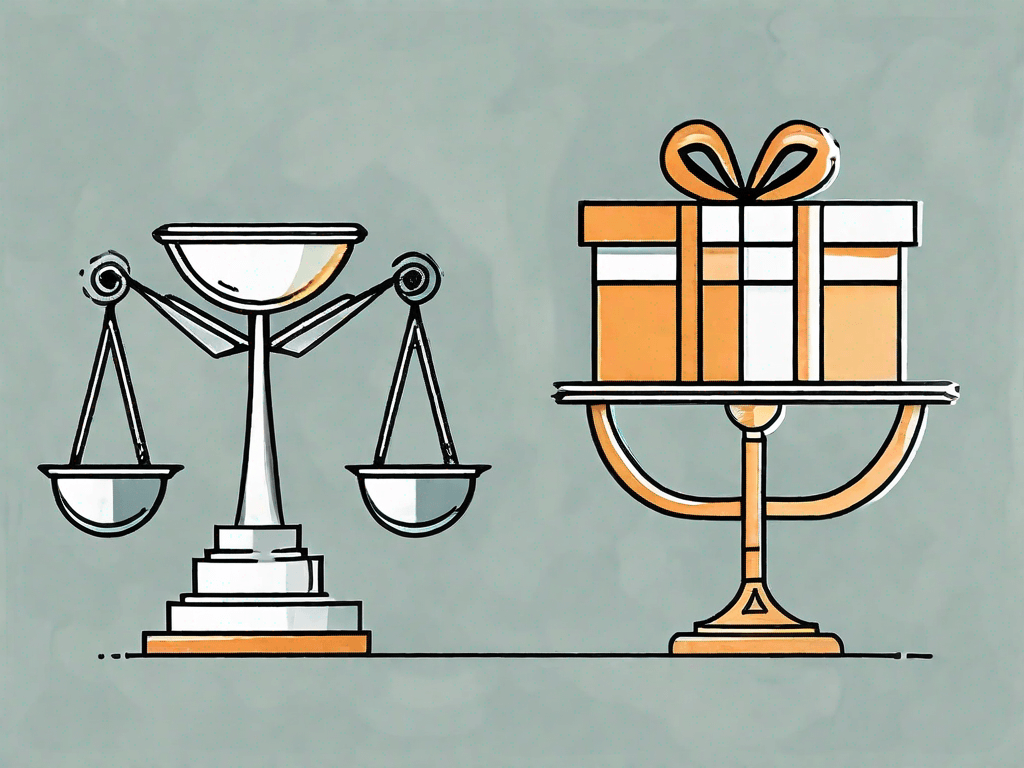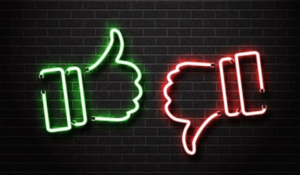Employee reward programs and employee benefits programs are both important components of a company’s overall compensation strategy. While they may sound similar, there are significant differences between the two. In this article, we will explore the purpose, benefits, and distinctions of each program, as well as highlight why HubEngage is the best platform to create and manage effective employee reward and benefits programs.
What is an employee reward program?
An employee reward program (ERP) is a strategic initiative designed to recognize and acknowledge employees for their hard work, achievements, and contributions to the organization. These programs typically include tangible incentives such as monetary bonuses, gift cards, or prizes, as well as non-monetary rewards such as public recognition, certificates, or even extra time off. The main objective of an employee reward program is to motivate, engage, and retain top-performing employees.
Employee reward programs have gained significant popularity in recent years. This is because organizations are increasingly recognizing the importance of creating a positive work environment and fostering employee satisfaction. By implementing a well-designed reward program, companies can not only boost employee morale but also enhance overall productivity and performance.
The Impact of ERPs on Organizational Goals
One key aspect of a staff reward program is its ability to align with the organization’s goals and values. By tying the benefits to specific objectives or milestones, companies can ensure that employees are motivated to work towards achieving these targets.
For example, a sales team may be rewarded with a bonus for meeting or exceeding their quarterly sales targets, while a customer service team may receive recognition for consistently providing exceptional service to customers.
Furthermore, they help foster a sense of camaraderie and healthy competition among employees. By introducing friendly competitions or team-based challenges, organizations can encourage collaboration and teamwork while still recognizing individual efforts. This not only strengthens the bond between employees but also creates a positive and supportive work culture.
Moreover, ERPs can extend beyond the traditional monetary incentives. Many organizations are now incorporating wellness programs as part of their reward initiatives. These programs may include gym memberships, health and wellness workshops, or even on-site fitness facilities. By prioritizing employee well-being, companies can demonstrate their commitment to the holistic development of their workforce.
Another important aspect of ERPs is the element of surprise and personalization. While regular recognition and rewards are essential, occasional unexpected gestures can go a long way in making employees feel valued and appreciated. This could include personalized thank-you notes, surprise team outings, or even small tokens of appreciation tailored to individual preferences.
It is worth noting that employee reward programs should be designed with fairness and transparency in mind. Clear criteria and guidelines should be established to ensure that rewards are distributed equitably and based on objective measures. This helps prevent any potential feelings of favoritism or bias, fostering a sense of trust and fairness among employees.
An employee reward program is a strategic initiative that goes beyond simple recognition and appreciation. It is a comprehensive approach to motivate and engage employees by providing tangible and intangible rewards that align with the organization’s goals and values. By implementing a well-designed reward program, companies can create a positive work environment, foster employee satisfaction, and ultimately drive overall success.
What are employee benefits programs?
Employee benefits programs (EBPs), on the other hand, focus on providing employees with a comprehensive package of non-wage compensations. These benefits often include healthcare insurance, retirement plans, paid time off, disability coverage, and other perks such as wellness programs or educational reimbursement. Employee benefits are crucial for attracting and retaining talent as they contribute to work-life balance and overall job satisfaction.
What is the difference between employee reward programs and employee benefits programs?
The key difference between employee reward programs and employee benefits programs lies in their focus and goal. While reward programs aim to recognize and incentivize individual or team achievements, benefits programs are designed to enhance the overall employee experience by providing essential support and resources. Reward programs are typically performance-driven and often have a short-term impact, whereas benefits programs are more long-term and contribute to employee well-being.
FOCUS:
Employee Reward Programs:
- Emphasize recognizing and acknowledging specific achievements or exceptional performance.
Typically involve one-time bonuses, recognition events, or tangible rewards.
Employee Benefits Programs:
- Provide ongoing, often non-monetary, perks and advantages to enhance overall employee well-being.
Include healthcare, retirement plans, vacation time, and other long-term benefits.
NATURE:
Reward Programs:
- Immediate and short-term in nature, linked to specific accomplishments or milestones.
- Aimed at reinforcing positive behaviors and motivating employees in the short run.
Benefits Programs:
- Longer-term and sustained, offering stability and security to employees.
- Focus on improving the overall work-life balance and job satisfaction.
FREQUENCY:
Reward Programs:
- Typically sporadic, tied to specific achievements, projects, or outstanding performance.
- Can be event-driven or periodic, depending on the organization’s culture.
Benefits Programs:
- Regular and consistent, providing continuous support throughout the employee’s tenure.
- Often form a standard part of the employment package and are not tied to specific accomplishments.
MOTIVATION:
Reward Programs:
- Designed to motivate employees by recognizing and rewarding exceptional efforts.
- Immediate positive reinforcement for desired behaviors.
Benefits Programs:
- Aimed at attracting and retaining talent by offering long-term value and security.
- Contribute to overall job satisfaction and loyalty over an extended period.
EXAMPLES:
Reward Programs:
- Employee of the Month awards, performance bonuses, recognition events, gift cards.
Benefits Programs:
- Health insurance, retirement plans, paid time off, flexible work schedules, professional development opportunities.
The Benefits of Offering ERPs
Implementing an employee reward program can yield significant benefits for both employees and the organization as a whole. Firstly, it reinforces a culture of recognition and appreciation, fostering a positive work environment. Recognizing employees’ hard work boosts morale, motivation, and engagement levels. Moreover, reward programs can incentivize high-performing employees to continuously strive for excellence, leading to increased productivity and better business outcomes.
The Pros and Cons of Staff Benefits Programs
Employee benefits programs provide a range of advantages for employees, such as access to healthcare services, financial security, and opportunities for personal and professional growth. These programs contribute to attracting and retaining top talent. However, they also entail certain challenges for organizations, including the cost of providing these benefits and ensuring compliance with legal and regulatory requirements. Careful planning and effective communication are essential to maximize the value of benefits programs while mitigating potential drawbacks.
Employee Preferences: Reward vs Benefits Programs
When considering the preferences of employees, it is essential to recognize that different individuals have varying motivations and needs. Some employees may value tangible rewards and recognition, while others prioritize access to comprehensive benefits. Conducting surveys or focus groups can help organizations understand their employees’ preferences and tailor their reward and benefits programs accordingly.
Creating a Holistic Approach to Team Rewards and Benefits
While employee reward programs and employee benefits programs are distinct, they are not mutually exclusive. A comprehensive and holistic approach that combines both can yield maximum impact. By integrating rewards and benefits programs, organizations can create an ecosystem that acknowledges employees’ efforts and supports their overall well-being. This integrated approach promotes a sense of belonging and strengthens employee engagement and retention.
How to Design an Effective Employee Benefits Program
Designing an effective employee benefits program requires careful consideration of employees’ needs, industry benchmarks, and budgetary constraints. Organizations should assess the most relevant benefits for their workforce and ensure clear and transparent communication about the available options. Additionally, leveraging technology platforms such as HubEngage can streamline benefits administration, allowing employees to easily access and manage their benefits.
Analyzing the Impact of Rewards and Benefits on Performance
Measuring the impact of employee rewards and benefits programs is crucial to assessing their effectiveness. Organizations should track relevant performance metrics such as employee satisfaction, retention rates, productivity levels, and even bottom-line results. By analyzing this data, organizations can identify areas of improvement and fine-tune their reward and benefits strategies for optimal outcomes.
The Role of Technology in Employee Reward Programs
Technology plays a vital role in the success of employee reward programs. With the right platform, such as HubEngage, organizations can streamline reward management, automate recognition processes, and provide employees with a seamless experience. HubEngage offers a variety of communication channels, including mobile apps, web, email, SMS, and digital signage. These channels ensure that rewards and recognition reach and engage all employees, regardless of their location or device preferences.
Why HubEngage is the Best Platform to Create and Manage Effective Employee Reward and Benefits Programs
HubEngage stands out as the best choice for organizations seeking to implement effective employee reward and benefits programs. With its comprehensive suite of features, HubEngage offers a user-friendly interface, allowing organizations to design, customize, and launch their reward and benefits programs effortlessly. Furthermore, HubEngage’s multi-channel communication capabilities ensure that rewards and benefits reach all employees, maximizing engagement and participation. The platform’s analytics and reporting functionalities enable organizations to measure the impact of their programs and make data-driven decisions to enhance employee satisfaction and overall performance.
Employee reward programs and employee benefits programs serve distinct purposes within an organization’s compensation strategy. While ERPs focus on formal recognition and motivation, EBPs provide essential support and resources. However, combining both programs in a holistic approach can create a powerful employee experience. By leveraging technology platforms like HubEngage, organizations can effectively design, implement, and manage their reward and benefits programs, thereby enhancing engagement, retention, and overall performance.
Want to Leverage the Nuances of Reward and Benefits Programs?
Look no further than HubEngage.
At HubEngage, we understand the intricacies of motivating and retaining top talent. Our comprehensive solutions are designed to align seamlessly with your organization’s goals, ensuring a motivated and engaged workforce. Experience the power of customization, personalization, automation, multi-language support, gamification, and exceptional customer service—all in one award-winning platform. Elevate employee satisfaction, boost productivity, and cultivate a thriving workplace culture with HubEngage. Transform the way you reward and inspire your team, and embark on a journey towards sustained success. Your path to a motivated and empowered workforce starts here.
Don’t just take our word for it; see a demo today and witness how HubEngage can transform your organization’s approach to employee engagement, saving you time and enhancing productivity.













